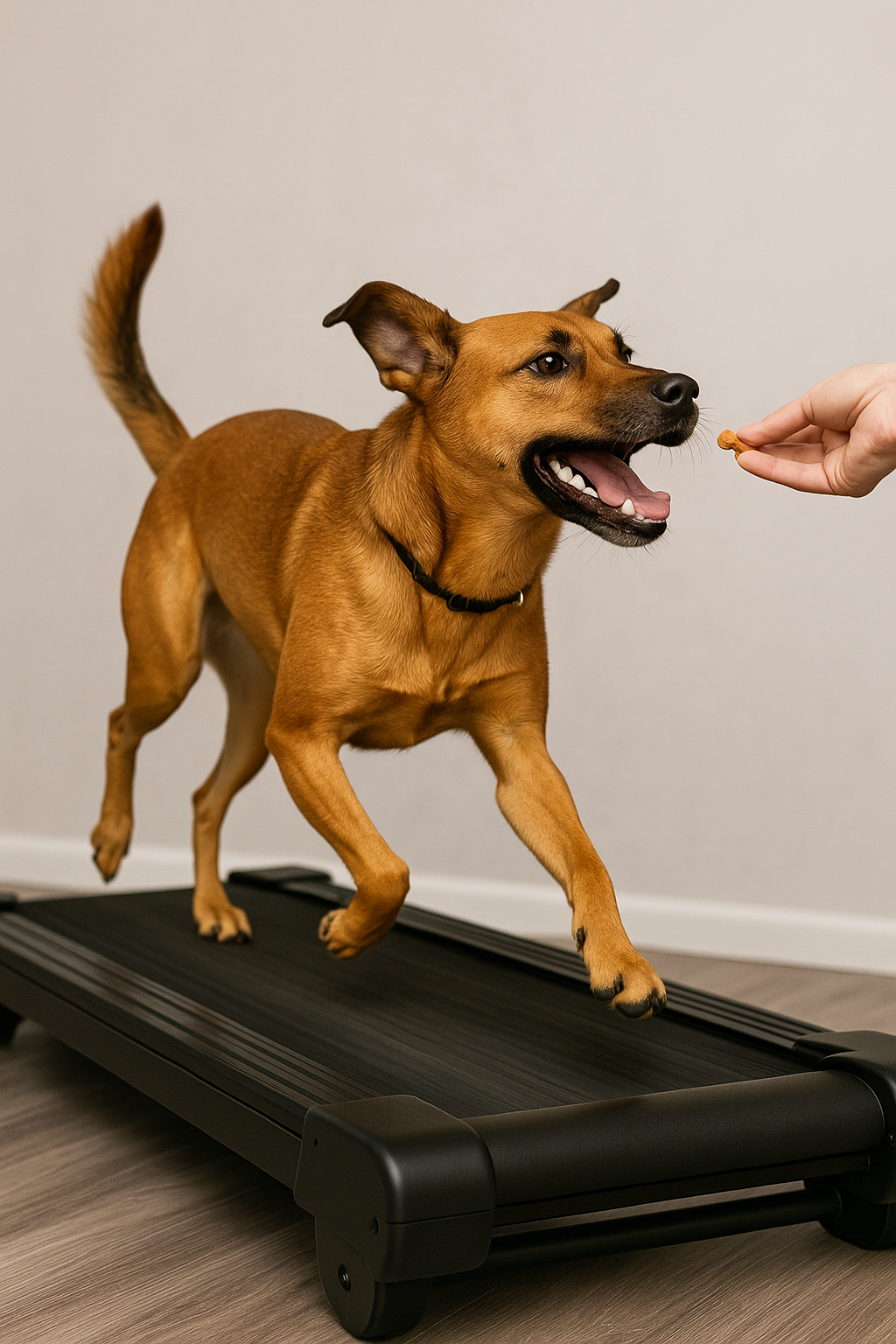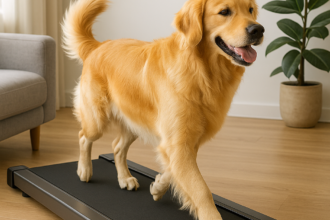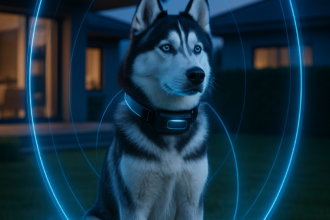Your dog treadmill won’t be worth its while if the pup hops off after three seconds. This detailed guide walks you through prepping, introducing, and polishing an indoor running routine that’s safe, positive, and boredom‑proof.
Read Next: Dog Treadmills & Treadwheels (2025 Buyer’s Guide) – Pet Gear Authority
Checklist — Gear & Prep Before Day 1
| Item | Purpose |
|---|---|
| High‑value treats (chicken, cheese) | Rewards that beat any hesitation. |
| Clicker or marker word | Marks the exact moment of correct behavior. |
| Harness & 4‑ft leash | Gives gentle guidance without choking. |
| Rubber floor mat | Adds grip under the treadmill. |
Training Timeline at a Glance
| Phase | Goal | Typical Duration |
|---|---|---|
| Exploration | Dog views/sniffs treadmill (off) without fear | 1–2 sessions |
| Static Luring | Dog hops on/off motionless belt for treats | 2–3 sessions |
| Slow Movement | Dog walks 0.5 mph for 30–60 seconds | 3–5 sessions |
| Building Duration | Add 1 minute per session up to target time | 1–2 weeks |
| Variable Speeds & Cues | Dog matches jog cue (e.g., “trot!”) | Ongoing |
(If your dog is nervous, double each phase—rushing creates setbacks.)
Step‑by‑Step Training
- Exploration Session
- Treadmill off, belt locked. Scatter treats on and around.
- Goal: Dog steps on willingly, sniffs, hops off. End session on success.
- Static Luring & Click‑Treat
- Stand beside treadmill. Lure dog onto belt with treat → click/mark → feed.
- Repeat until dog trots on at verbal cue “up.” Release with “off.”
- Pro tip: Keep leash loose; let the dog choose.
- Introduce Low Noise
- Turn motor on while dog is off. Feed treats for calm behavior.
- Turn off, end session before stress signs (lip‑lick, yawns).
- First Moving Belt
- Dog on harness, front paws on belt. Start 0.3–0.5 mph.
- Guide with treat at nose height; click after 3–4 steps.
- Stop, cue “off,” big reward. Two reps max.
- Build Duration & Speed
- Add 30–60 seconds per day up to vet‑approved limit (age, breed, fitness).
- Rule of thumb: 5–8 min for toy breeds, 12–15 min for mediums, 20 min for working breeds.
- Increase speed by 0.2 mph every 2–3 sessions once posture looks relaxed.
- Introduce Verbal Cues
- Say “walk” → start belt → reward.
- Later add “trot” (faster) and “finish” (slow down & stop).
- Dogs catch on quick if each cue always predicts the same belt change.
- Fade the Treat Lure
- Switch to intermittent rewards: every 30 seconds, then every minute, then random.
- Praise verbally, pet between treats to keep motivation up.
Troubleshooting Common Roadblocks
| Problem | Fix |
|---|---|
| Dog freezes when belt starts | Lower speed to 0.2 mph, reward small forward shifts, end early. |
| Dog tries to jump off sides | Add side rail panels (PVC boards) or hold leash centrally. |
| Excessive drooling or yawning | End session, revisit Exploration phase tomorrow. |
| Nails catching on belt | Dremel or clip nails flush; long nails cause slipping. |
What If Your Dog Hates It?
Every dog is different. If your pup still isn’t a fan after a week or two, don’t force it. Some dogs just prefer the open road. Instead, use the treadmill as an occasional rainy-day backup and put your training energy into outdoor adventures or indoor games. Remember, the treadmill is a tool—not a test.
Mix Up the Scenery
Let’s be real: even the best treadmill routine can get stale. If your dog seems a little bored, switch things up! Move the treadmill to a new room, open a window, or set it near the TV and let your dog watch squirrels or cartoons while she walks. You can even play a “walk-along” video of dogs on the beach—some pups really respond to new sights and sounds.
Frequently Asked Questions
Q: Can puppies use a treadmill?
A: Not until growth plates close—usually 12–14 months for large breeds, 9–10 months for small. Use short, flat leash walks instead.
Q: Incline or no incline?
A: Flat until the dog can jog 15 min comfortably; then a 5 % incline builds rear‑end strength without overloading joints.
Q: How often per week?
A: 3–4 sessions for average dogs, 5 for high‑drive athletes. Always schedule one full rest day.
Final Word –
Conditioning your dog to a treadmill is less about forcing exercise and more about building a positive association. Go slow, pay generously in praise and treats, and within a month that humming belt transforms from a mystery machine into your dog’s favorite rain‑day workout. With proper conditioning, you protect joints, burn energy, and keep daily walks fun instead of frantic—even when the weather says otherwise.
Read Next: Dog Treadmills & Treadwheels (2025 Buyer’s Guide) – Pet Gear Authority









